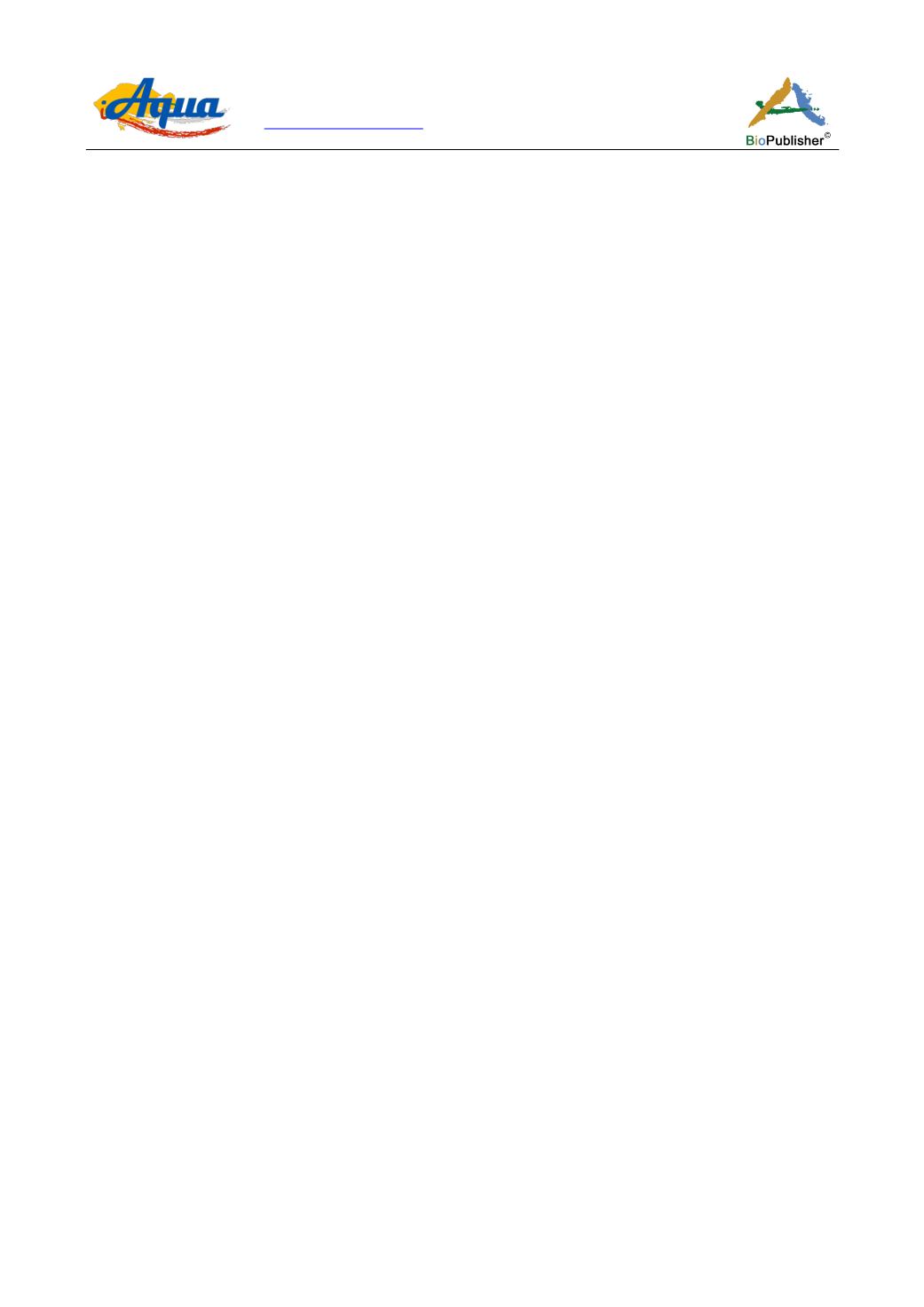
International Journal of Aquaculture, 2018, Vol.8, No.13, 98-103
99
Better body condition is correlated with high values of condition factor. Similarly, poor body condition is obtained
when the values of condition factor is less (Gupta and Tripathi, 2017). Although, it is influenced by stress, sex,
season, availability of food and the water quality in the environment in which they live (Ighwela et al., 2011).
Length-weight relationship and condition factor data on a given fish population are vital parameters for stock
assessment, because they provide important information (Olabode et al., 2007; Shalloof et al., 2009) in both wild
and controlled environments. In addition, the information is vital to enhance the knowledge of the natural history
of commercially important fish species like
L. nedgia
,
V. beso
and
C. gariepinus
for conservation. The
length-weight relationship and condition factor of
L. nedgia
,
V. beso
and
C. gariepinus
have been reported from
several water bodies (Tesfaye, 2006; Beletew, 2007; Gebremedhin et al., 2012; Melaku et al., 2017) and
(Alemayehu, 2009; Abera et al., 2014; Abera, 2016) respectively. However, there is no summarized information
on the length-weight relationship and condition factor of these three species in different Ethiopian water bodies.
Therefore, this review paper is aimed to evaluate the length-weight relationship and condition factor of the
endemic
Labeobarbus nedgia
, the native
varicorhinus beso
and the African catfish
Clarias gariepinus
in
Ethiopian lentic and lotic water bodies.
1 Materials and Methods
Data sources were collected from January, 2018 through February, 2018. A range of literature sources were used
for this review including journal articles, books and book chapters, workshop proceedings, FAO reports, bulletins,
legal documents, and unpublished reports including PhD dissertations. The documents were collected from
University libraries and Ethiopian Ministry of Livestock and fishery, from individual researchers, and from the
Internet data bases.
1.1 Some biological aspects of the three commercially important fishes in Ethiopian water bodies
1.1.1 Length-weight relationship
The wellbeing of fishes is determined by the length-weight structured data (Hamid et al., 2015). Because of, it can
predict the average weight of the fish at a given length group by establishing a mathematical relation between
length-weight (Ahmed et al., 2017). Based on this, fishes can achieve isometric, negative allometric or positive
allometric growth pattern throughout its life (Nehemia et al., 2012). Isometric growth pattern (b=3) is all the body
parts grow at nearly the same rate as the fish increases in size. Therefore, nearly isometric growth pattern was
reported in Geba and Sor Rivers (Melaku et al., 2017), Beshilo River (Beletew, 2007), Arno-Garno River
(Gebremedhin et al., 2012), Angereb and Sanja Rivers (Tesfaye, 2006) for
L. nedgia
fish species and in Lake
Hayq (Alemayehu, 2009), Lake Ziway (Abera et al., 2014; Abera, 2016) and in Lake Babogaya (Abera et al.,
2014) for
C. gariepinus
(Figure 1)
Positive allometric growth (b>3) in which fish become relatively deeper-bodied as it increases in length (Riedel et
al., 2007) and therefore,
Varicorhinus beso
had positive allometric growth pattern in Dura and Ardi Rivers
(Beletew, 2007) (Figure 1).
The differences in regression coefficient b (growth parameters) might be due to seasonal fluctuations in water
quality parameters, food availability, feeding rate, gonad development and spawning period (Bagenal and Tesch,
1978). According to Fulton (1904) the growth performance of fish could vary in different places and at certain
times of the year and this is due to variations in biological factors, such as availability of foods, quality and
quantity of food, feeding rate and spawning period of fish affects the b value of fishes (Suquet et al., 2005).
According to Wotton (1995), the coefficient of length weight relationship value (b) is used as an indicator of food
availability and growth pattern, where the feeding availability is influenced by spatial and temporal variations of
foods. In addition, to the variation between habitats, physiological and biological factors of the fish affect the fish
growth (Zdanowski et al., 2001). The gonad development also affects the fish weight and b values in the
length-weight relationship (Wotton, 1995; Zdanowski et al., 2001). In case of season variations Beletew (2007)
stated that the weight of the fishes is higher in the wet season than the dry. Because the wet season is the time of
active feeding for most riverine fish population. This is due to eutrophication that the flood brings external


